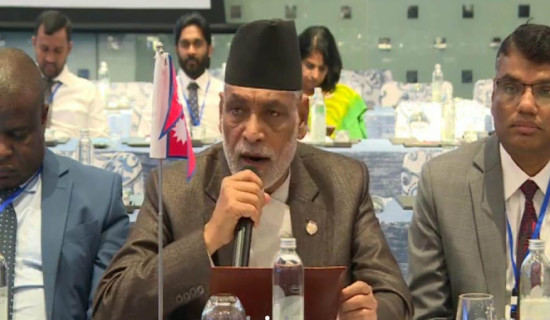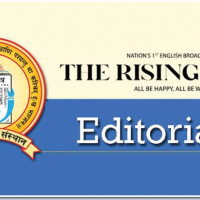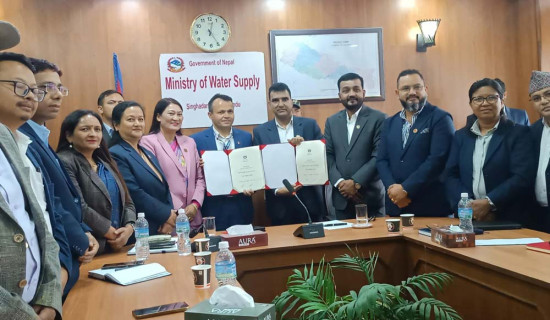- Friday, 9 May 2025
A Perishing Beauty
Through the dust of the city, I finally found myself standing on the ground of my former school, tucked just far enough from the city’s grasp. A pain wretched into me as I stood there, desolate, gazing at the snowless mountains that stretched from the hills of Kathmandu to Bhaktapur.
Back in 2015, I remember gazing at these same mountains from this very ground. Winters then were indelibly special, for the snow would always glisten across these peaks under the soft sun. These mountains were my solace during long, homesick winters when I’d warm myself with a woolen sweater, sitting on the cold ground, tracing the jagged snowline with my eyes, and dreaming of what it might feel like to stand up there, touching the sky.
But the snow, the snow of my childhood, is gone. And every time I look to these mountains, a pain sobs within me. I wonder if my children—or my grandchildren—will ever see these majestic peaks covered in snow, shining so brightly that a smile would undoubtedly find its way to their faces like it did when I was a child.
Upper Mustang, once a sought-after vacation spot for those eager to witness snow-covered mountains, is slowly fading from its former reality. When I visited the region two years ago on a college tour, I was struck by how different it was from the images I had seen online. A local shopkeeper at a souvenir store lamented the dwindling snowfall. “Our winters aren’t the same anymore,” he said, his wrinkled face etched with concern. “The snow comes late, if it comes at all. And when it does, it disappears so quickly.”
The snow-fed rivers of Nepal are thinning each year. These rivers, born from the glaciers and snow of the Himalayas, sustain millions of people downstream. But as glaciers retreat at an alarming rate, the water that has given life for centuries is diminishing. Recently, I read in The Rising Nepal about how global warming is accelerating these changes. As highlighted in the article, the melting of glaciers and the reduction of snow cover have already left their mark on iconic peaks like Machhapuchhre in Pokhara, which is now largely snowless.
A published research said that Himalayan temperatures are rising nearly twice as fast as the global average. The International Centre for Integrated Mountain Development (ICIMOD) has sounded the alarm that even with the most optimistic scenario of limiting global warming to 1.5 degrees Celsius, one-third of the glaciers will vanish. How blind we have become? Global warming is no longer just a future threat; it’s here, robbing us of the beauty and balance that have defined our lives for generations.
Initiatives like the Sagarmatha Sambaad, as reported in the media, emphasize the need for long-term solutions. This dialogue seeks to bring global attention to Nepal’s fragile mountain ecosystems and advocate for sustainable environmental policies. But beyond discussions, tangible action is necessary. The government must take decisive action against global warming through renewable energy, sustainable transport, and responsible land management. Expanding solar power, biogas, and energy-efficient stoves can reduce reliance on fossil fuels, while investing in electric buses, cycling infrastructure, and stricter emissions control will curb urban pollution.
Reforestation, agroforestry, and organic farming must be prioritised to restore balance to our ecosystems. Waste should no longer pile in landfills but be repurposed through composting, plastic bans, and waste-to-energy solutions. Water security demands rainwater harvesting, micro-hydro projects, and glacier monitoring. Policies must go beyond paper—carbon taxation, environmental laws, and public awareness campaigns must be enforced with urgency.









-original-thumb.jpg)







